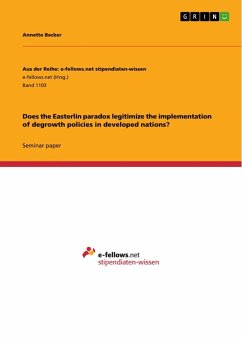Master's Thesis from the year 2023 in the subject Economics - Job market economics, grade: 1,0, Berlin School of Economics and Law, language: English, abstract: The thematic framework of the thesis, entitled "Implementation and Assessment of Flexicurity Policies in Germany" consists of flexicurity governance in general, in the EU and the concrete implementation in Germany. The aim of the thesis is to examine whether and to what extent the European Employment Strategy has been or is being implemented in the German labor market and with which measures. For this purpose, the following research question served as a basis: To what extent and how has flexicurity - as a political concept and socioeconomic model - been implemented in Germany, and has it been successful in terms of both flexibility and security? Based on the research question, this thesis is divided into three parts. Starting with general remarks on flexicurity, the argumentation on flexicurity as a European strategy leads to specific remarks on the implementation of flexicurity in Germany. Starting with general remarks on flexicurity, the argumentation on flexicurity as a European strategy leads to specific remarks on the implementation of flexicurity in Germany. The first part discusses the market conditions, the definition(s) and the roots of flexicurity. It establishes both the working definition and clarifies other terms that are important for understanding the rest of the paper. This chapter should be read as an introduction to the subject and is intended to lay the foundation for the next two sections. In the second part, flexicurity is presented as a European employment strategy and its origins, cornerstones and objectives are described. Further developments within other European pillars are briefly outlined. As European flexicurity is made up of different components, these are also summarised here, and developments in relation to the labor market and welfare are briefly sketched out. The final part answers the research question by looking at the concrete implementation of flexicurity in the German labor market and its implications for welfare. The work is mainly based on secondary literature such as laws, programs, statistics, reports and existing literature.
Hinweis: Dieser Artikel kann nur an eine deutsche Lieferadresse ausgeliefert werden.
Hinweis: Dieser Artikel kann nur an eine deutsche Lieferadresse ausgeliefert werden.








